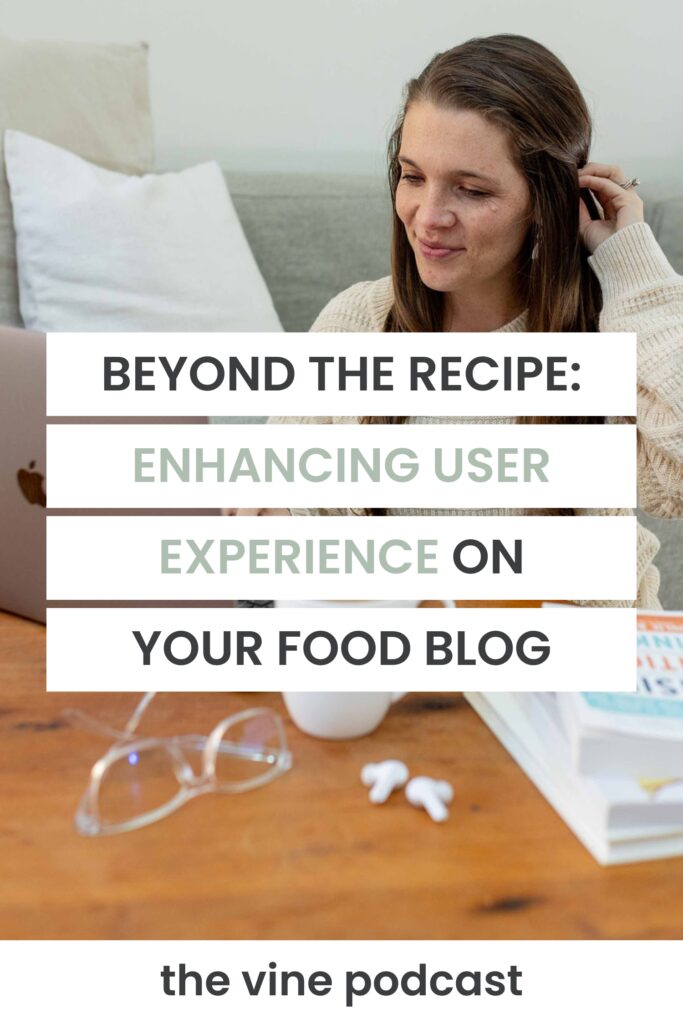Have you ever gone to a food blog and been super frustrated by the experience you had on their website? Creating a solid user experience is something I think we all want for our readers, but what do we need to do to make sure that happens?
Today we’re diving into some best practices, both things to do and not to do for better user experience. I’ll share 6 key best practices of how to make sure your readers have a quality experience on your website and want to come back for more of your content.


One of the biggest rules for better UX is to keep it simple!
The less you have going on, the better for UX.
The reality is bloggers have a lot of things going on on their site. You want someone to subscribe to your email list, share your post to their friend on Facebook, leave a comment and a rating and stick around for a few minutes so you get lots of ad impressions, right?
All of those are good things but it’s an overwhelming demand list.
Easy wins: duplicates and repetition. Focus on your user first.
Limit intrusions and distractions
- Most important thing here is utilizing DELAYS. Pop ups are fine as long as they are timed well. That typically means delaying 5 to 7 seconds.
- It also means not have all the things set up. What do you REALLY want? If you’re focusing on growing your list – do that.
- ADS: I don’t think anyone will pretend that ads are not annoying but we know they’re necessary. Check on your ads though. Are all of your ad placements generating revenue? If one isn’t substantial, can you turn it off?
Have a Table of Contents for Long Form Posts
- Open but showing only the first 3 headings is the SEO recommendation. We use a custom plugin that does this.
- This definitely can be personal preference, but most of the SEOs recommend it. Google likes it and it is HELPFUL for your readers.
- Ask your readers if they like it!
Make your content readable
- Break up long paragraphs
- Utilize blocks to break up text/image pattern
- Use bullet points to help readers scan
Don’t have multiples of the same thing
GROW – multiple heart icons with bookmarking
Share icons through grow and through Hubbub (formerly grow social). Or having the floating sidebar and the inline icons, both with a share count.
Check your website on mobile
When your website first loads, can you actually read the content? remember this is the moment someone decides whether to stick around.
- header should take up absolutely no more than 100 pixels.
- a lot of bloggers have a large form header, then a large post title section and then ads cover up the bottom of the screen so all you can read it part of the first sentence of the post.
- Things load very differently on mobile. you should check this regularly since 80-90% of your traffic is coming from mobile.
Don’t overwhelm your audience with too many calls to action
Add helpful and unique pieces of content
Try to put yourself in the shoes of your reader and think about what they would need. This gets really deep into understanding your audience on a personal level like you would know a friend.
For example, before you tell your audience to use a mandolin to thinly slice onions think about whether or not your ideal reader would have a mandolin to begin with.
Call to Action
I would love to hear which ideas you are excited to try improve your website’s user experience! Let’s connect on Instagram and tell me what stood out to you!
Sign up today to receive my FREE Blogger Playbook guide for your journey beyond ad revenue!

ready to take your food blog to the next level?
We work with food bloggers looking to stand out of the crowd through custom brand and website design.




Leave a Comment